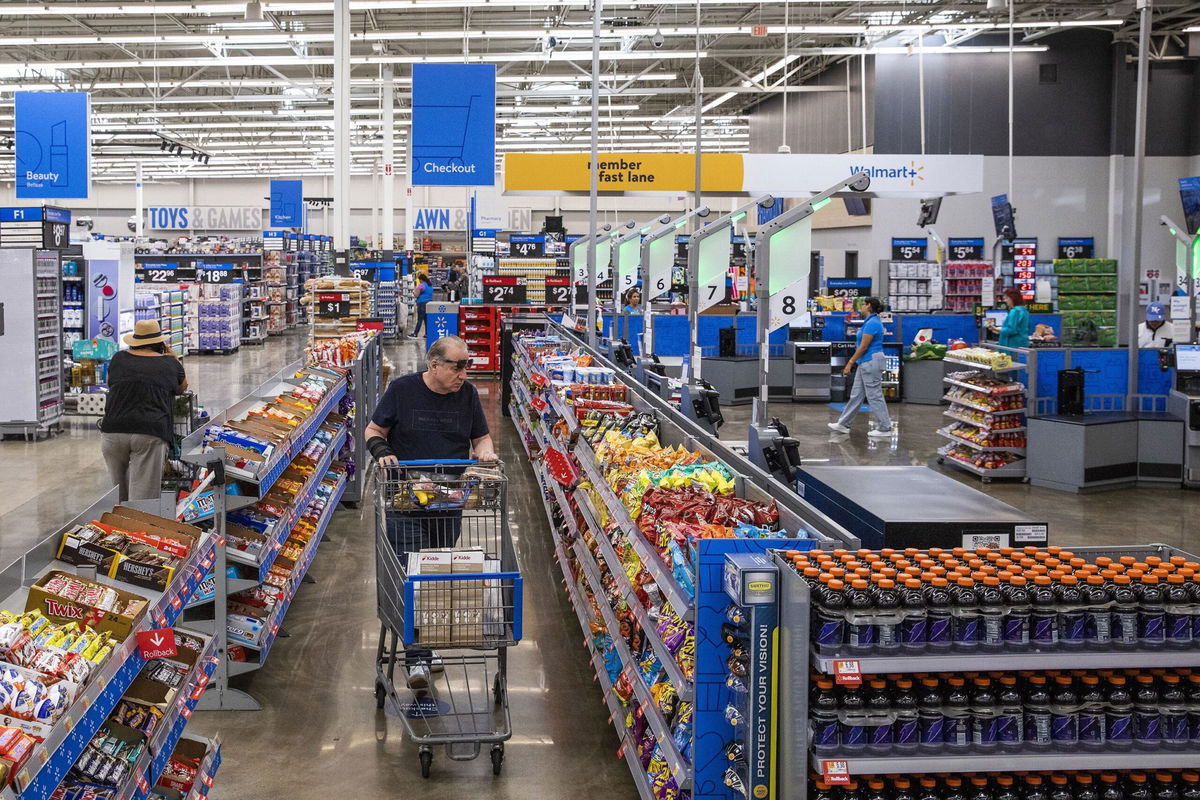By Nathaniel Meyersohn, CNN
New York (CNN) — Americans are cutting back on Disney parks, Big Macs and Starbucks coffee. But they keep shopping at Walmart.
Walmart’s US sales at stores open for at least one year increased 4.2% last quarter and its operating income surged 8.5% during the quarter. Walmart’s US digital sales are booming: They grew 22%.
The company raised its sales and profit guidance for the year, a sign it expects its strong growth to continue. Walmart’s (WMT) stock surged 7% during pre-market trading Thursday.
Walmart is America’s largest retailer and a gauge of consumer sentiment. The company reaches a broad swath of consumers, and its business is steady in most economic conditions.
But shoppers are looking for deals after years of higher prices and interest rates and now a slowing job market. Although inflation has fallen to its lowest level in three years, Americans are still paying more than they were for groceries, housing and many goods.
That has put Walmart in the sweet spot.
As customers have scoffed at $6 iced coffee at Starbucks, $15 Big Mac meals at McDonald’s and other items, they’re buying groceries, household essentials and other products at Walmart because they feel they are getting good value for their money.
“We aren’t experiencing a weaker consumer overall,” Walmart CEO Doug McMillon said on a call with analysts. “Customers from all income levels are looking for value and we have it.”
Groceries account for more than half of Walmart’s sales, and Walmart has benefited from its pricing advantage— Walmart’s prices are around 25% lower than traditional supermarkets, according to analyst comparisons.
Walmart said its overall prices at stores and Sam’s Club were down slightly from a year prior. It also temporarily dropped prices — known as “rollbacks” — on 7,200 select items. Walmart is not the only retailer cutting prices. Target, Walgreens and other chains are slashing prices too. These retailers are cutting prices to try to draw back customers.
Walmart said it does not expect deflation, in which both prices and incomes go down. Although consumers want lower prices, deflation can be dangerous for the economy.
While low and middle-income shoppers have traditionally formed the core of Walmart’s customer base, Walmart also has grown recently with people making more than $100,000 a year and gained market share.
Walmart said it continued to gain market share with upper-income households last quarter.
“The only place anyone is shopping right now is Amazon, Walmart and Costco,” said Michael Baker, an analyst at DA Davidson. “Walmart does a great job focusing on value. Value has become more important. Structurally, they’ll well positioned.”
The company has used its giant scale and profits from higher-margin businesses like advertising to muscle down prices. And it has invested billions of dollars in recent years remodeling stores and building a strong online business to rival Amazon’s.
“Today’s Walmart is different,” CEO McMillon said.
Heading into Thursday, Walmart’s stock was up 29% this year, outpacing the S&P 500. Target’s (TGT) stock has dropped 5% and Home Depot (HD) is up 3% this year.
Overall, consumer spending, the backbone of America’s economy, is still resilient. Consumers are just being more selective about what they buy and where they shop.
Sales at US retailers unexpectedly surged in July, the Commerce Department said Thursday, rising by a solid 1% from the prior month,
Home Depot executives said on an earnings call Tuesday that consumers were healthy, but they were taking on fewer large home renovation projects. That led to sluggish sales for building materials, lumber and construction-related equipment.
“Higher interest rates and greater macro-economic uncertainty pressured consumer demand more broadly, resulting in weaker spend across home improvement projects,” Ted Decker, Home Depot’s CEO, said in a statement.
The-CNN-Wire
™ & © 2024 Cable News Network, Inc., a Warner Bros. Discovery Company. All rights reserved.

